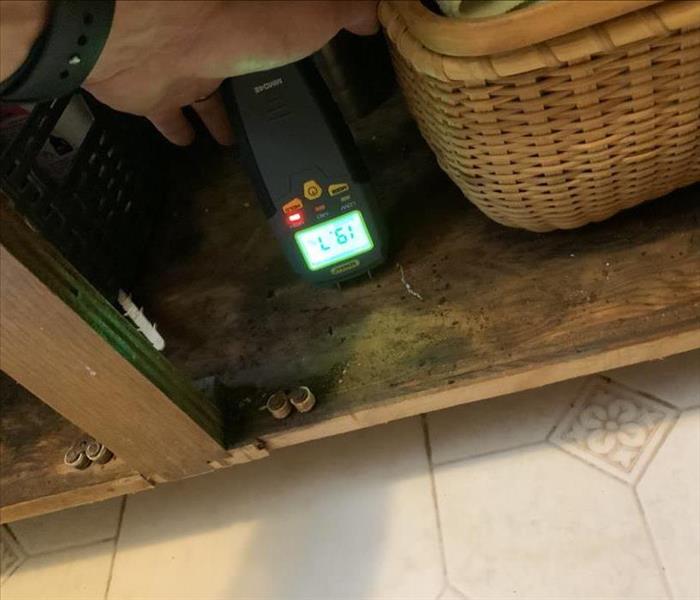The Do's and Don’ts of Removing Flooring After a Kitchen Water Loss
8/22/2024 (Permalink)
 If you need assistance, SERVPRO is Here to Help® with expert advice and comprehensive restoration services.
If you need assistance, SERVPRO is Here to Help® with expert advice and comprehensive restoration services.
The Do's and Don’ts of Removing Flooring After a Kitchen Water Loss
Water damage in your kitchen can be a stressful situation, and knowing when and how to remove flooring is crucial to preventing further issues. Here’s a guide to the do’s and don’ts to help you manage the situation effectively:
Do's:
Do Act Quickly
Time is of the essence when dealing with water damage. The sooner you address the problem, the less chance there is for secondary damage like mold growth. If you notice water damage, start the removal process as soon as possible.Do Assess the Extent of Damage
Evaluate how far the water has spread. If the damage is limited to a small area, it might be possible to repair just that section. For extensive damage, more thorough removal might be necessary.Do Use Proper Tools and Safety Gear
Ensure you have the right tools for removing the flooring and wear appropriate safety gear, including gloves, goggles, and a mask, to protect yourself from potential hazards like mold spores or debris.Do Dry the Area Thoroughly
Before installing new flooring, ensure the subfloor and surrounding areas are completely dry. Use dehumidifiers and fans to aid in the drying process and prevent future mold problems.Do Consult Professionals
If you’re unsure about the extent of the damage or the proper removal process, consult with a professional restoration service like SERVPRO®. Our experts can assess the damage and guide you through the necessary steps.
Don’ts:
Don’t Delay Removal
Procrastination can lead to more severe damage. If you suspect or confirm water damage, don’t wait too long to remove the affected flooring and start the restoration process.Don’t Ignore Hidden Damage
Water can seep into walls, under cabinets, and into subfloors, causing hidden damage. Ensure you check these areas thoroughly to avoid missing any damage that could cause future problems.Don’t Overlook Moisture Testing
Simply removing visible flooring isn’t enough. Use moisture meters to check the levels in the subfloor and surrounding materials to ensure they are adequately dried.Don’t Reuse Damaged Flooring
If the flooring is water-damaged, it’s best not to attempt to reuse it. Water-damaged materials can compromise the integrity of your home and lead to more issues down the line.Don’t DIY If You’re Unsure
While DIY can be a great way to save money, flooring removal after a water loss can be complex. If you’re not confident in your ability to handle the task properly, it’s best to leave it to the professionals to ensure the job is done right.
Handling water damage in your kitchen requires prompt and careful action. By following these do’s and don’ts, you can manage the situation effectively and prevent further complications. If you need assistance, SERVPRO is Here to Help® with expert advice and comprehensive restoration services. Contact us to get your kitchen back to its best condition!
#SERVPRO #WaterDamage #KitchenRestoration #FlooringRemoval #HomeRestoration #ExpertAdvice






 24/7 Emergency Service
24/7 Emergency Service